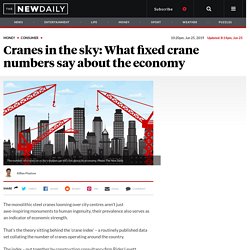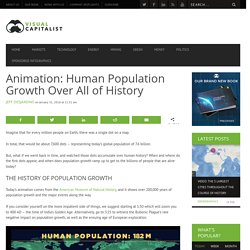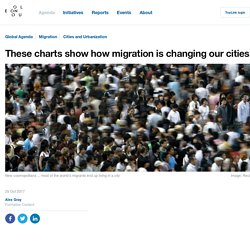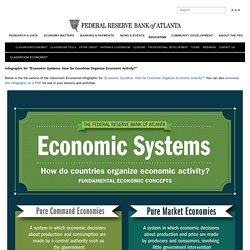

Economics Academy - Semester One - The Australia Institute. Welcome!

Here you will all the resources you will need to complete Semester One of Economics Academy. Tutorials | Webinars | Further Reading Tutorials In each video, Richard Denniss and Matt Grudnff will take you through some of the basic principles of economics in Richard Denniss' typical easy-to-understand style. The science of the efficient allocation of scarce resources (released: Wednesday 30th September)What’s the point of learning a bit of economics?
Webinars 5x webinars with Richard Denniss (1 hour, via Zoom)Every fortnight Richard Denniss will run a webinar with Economics Academy participants where he'll tackle one big economic issue from the current economic debate -- and where you will have the opportunity to ask him questions based on the video tutorials. 2pm Thursdays, every fortnight. A virtual bank teaching finance through experience. Category:Economic theories. How the Stock Market Works. The crane index: what cranes say aboutr Australia's economy. The monolithic steel cranes looming over city centres aren’t just awe-inspiring monuments to human ingenuity, their prevalence also serves as an indicator of economic strength.

That’s the theory sitting behind the ‘crane index’ – a routinely published data set collating the number of cranes operating around the country. The index – put together by construction consultancy firm Rider Levett Bucknall – records the total number of cranes in the country, as well as breaking it down into individual cities and whether or not those cranes are involved in residential or non-residential construction. That’s important information for economists because it serves as a barometer of construction industry health. In short, fewer cranes in a city typically means less building activity, with the opposite also being true.
From that, economists can glean quite a bit of information. Reading the index That’s an interesting tidbit, but what does it actually mean, and why should we care? Economic Principles. Economics 101: Hedge Fund Investor Ray Dalio Explains How the Economy Works in a 30-Minute Animated Video. Want to know how the economy works?

It “works like a simple machine," according to Ray Dalio, who explains its mechanisms in the 30-minute video above. The presentation is “simple but not simplistic,” says the site Economic Principles, a research arm of Dalio’s company Bridgewater Associates. The lesson packs in most of the major boldfaced concepts in the average overpriced college economics textbook, “such as credit, interest, rates, leveraging, and deleveraging.”
And it does so in that most engaging means of learning things online, an animated video, narrated by an expert. All that’s well and good, but can we really understand such a volatile beast as “the economy”—an abstraction that sometimes seems like a cruelly rigged game and sometimes like a not-particularly-benevolent (to most people) deity—in only half an hour? In that piece, the “voracious learner who studies narrative and communication… turns an enormously complex subject into a simple, compelling narrative.” 20 million INDICATORS FROM 196 COUNTRIES. Reserve Bank of Australia. Countries, economies and regions. 40 Years of Data Suggests 3 Myths About Globalization. Animation: Human Population Growth Over All of History.
Imagine that for every million people on Earth, there was a single dot on a map.

In total, that would be about 7,600 dots – representing today’s global population of 7.6 billion. But, what if we went back in time, and watched those dots accumulate over human history? When and where do the first dots appear, and when does population growth ramp up to get to the billions of people that are alive today? The History of Population Growth Today’s animation comes from the American Museum of Natural History, and it shows over 200,000 years of population growth and the major events along the way. If you consider yourself on the more impatient side of things, we suggest starting at 1:50 which will zoom you to 400 AD – the time of India’s Golden Age. It took 200,000 years of human history to get to one billion people – and just 200 years to reach seven billion. Key Population Moments Agriculture The impact of farming cannot be emphasized enough. East vs. Dollar Street. These charts show how migration is changing our cities.
In 2015, over a billion people migrated: 244 million went abroad and 763 million moved within their home country.

Some boarded planes to start a new job in another country. Some risked their lives in overcrowded boats, fleeing war or famine. And others left the countryside in search of jobs and a better quality of life. What the vast majority have in common is that they ended up moving to a city. A new report by the World Economic Forum looks at these patterns of migration and how they affect the world’s cities. Supply & Demand: How Do Markets Determine Prices? - Federal Reserve Bank of Atlanta. Is Australia Full? – News, Research and Analysis – The Conversation – page 1. Tom Wilson Principal Research Fellow, Charles Darwin University Liz Allen Demographer, ANU Centre for Social Research and Methods, Australian National University Bill Bellotti Professor and Director Food Systems Program, Global Change Institute, The University of Queensland Shanthi Robertson Senior Research Fellow, Institute for Culture and Society, Western Sydney University Paul Sutton Professor, Department of Geography and the Environment, University of Denver Emily Longstaff PhD Candidate (Sociology), Australian National University Glen Searle Glen Searle is a Friend of The Conversation.

Infographic for "Economic Systems: How Do Countries Organize Economic Activity?" - Federal Reserve Bank of Atlanta. Skip to content Classroom Economist Infographic for "Economic Systems: How Do Countries Organize Economic Activity?

" Below is the full version of the Classroom Economist infographic for "Economic Systems: How Do Countries Organize Economic Activity? " You can also download this infographic as a PDF for use in your lessons and activities. Supply & Demand: How Do Markets Determine Prices? - Federal Reserve Bank of Atlanta.
Online Games for Teaching Economics.